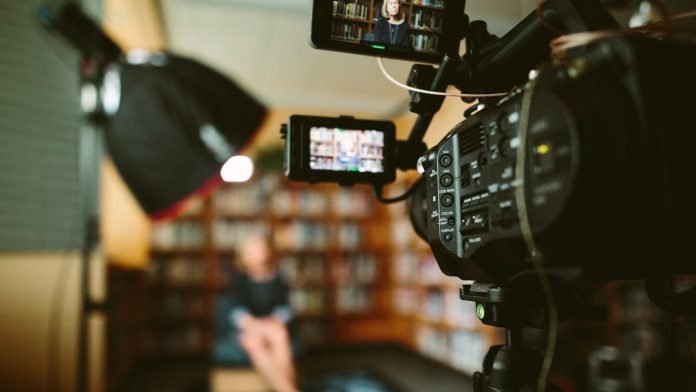Last Updated on August 4, 2024 by Asfa Rasheed
Denver video production refers to creating video content for individuals and companies in Denver, CO as well as the surrounding cities. Although video production can be tedious, the benefits are well worth it. Many businesses have used video content to enhance their marketing strategies in today’s world. To get the best video content, we recommend searching for the best Denver video production companies in the market. Video producers say it is essential to research the company before engaging with them.
Table of Contents
Video Production Steps
Video production is made up of three steps or phases.
● Pre-production
● Manufacturing phase
● Post-production phase.
Each phase is crucial for our Denver video production team. Each step contains elements or processes that occur at each stage. Video production projects that are not managed well or planned well will produce a video of poor quality and not meet its expectations. These steps are essential for creating a great video.
Pre-Production
This is the first phase of video production. It involves a lot more meetings and getting all the production teams together. These sessions are used to plan and manage production from the initial concept to the final delivery project. The video phase is where the producers decide how to shoot the video. They also determine who they will use, what resources they will need, and how long they will take to complete the project. This stage is the most time-consuming in the production process. This phase requires planning and a lot of preparation to ensure a smooth transition to the next step, which is the actual filming.
Objectives Of The Pre-Production Phase
Understanding the purpose of the video is essential in this phase. The following questions should be answered by all video producers before asking for work:
● Why aren’t you making this video?
● Watching the video?
● Who are the intended viewers for the video?
● What will viewers take away from the video’s content?
Before guiding the project, it is essential to establish a clear objective. This will allow you to determine its success or failure in each content. They explain how they use SMART to create achievable goals. They suggest that goals should be:
● Specific
● Measurable
● Feasible
● Relevant
● Time limit.
This phase includes the following:
● Casting team audition
● Casting interviews
● Storyboard
● Scenario creation
● Budget creation for the video
● Pre-visits and location scouting
● Equipment preparations
● Brainstorming on goals
● Video
● Obtaining licenses at local authorities.
● The pilot and the client share their visions and ideas.
After all this is done, the video production can now move on to the next stage. All details behind the scenes have been polished at the meeting table and at the management level. Files for the project can be found at the management level.
Manufacturing Step
This is the actual filming phase. This phase includes shooting images on-site and outside of meetings. This phase takes less time than the pre-production phase. It is smooth if the pre-production step is well executed and planned. It is the responsibility of the video producer and other production experts to ensure that everything runs according to plan. This is where a production company must call upon all its experts during filming. These are the steps involved in the production phase.
Post-Production Stage
This is the final stage in video production. It involves editing behind-the-scenes for audios or motion graphics, assembly of all animations onto a final edited copy and voice mastering. Content is then cut from the recorded footage, too long. The edited content is then edited to the required length. This stage also includes recording a voice-over and coloring the video. Music can be added to the video to personalize the content according to the client’s needs. Video editing is done with special software that compiles all footage.
Principles And Advantages Of Denver Video Production
Denver video production refers to the creation and production of a film or documentary and the production of fiction for the internet, television, or cinema. There are several stages: writing, pre-production, development, display, and post-production. Below are some steps in video production.
Filming And Writing In Audiovisual Production
The art of writing in video production expresses the film’s narrative and aesthetic approach as an institution film. You decide you adapt, then you approve the final scenario. You will receive a detailed work plan. The company’s expertise in video production and its team of actors and technicians will ensure that the shoot is a success.
● Identification and selection of filming locations.
● The implementation of technical measures;
● The cast of actors;
● scenario rehearsals;
● The coaching
● setting up procedures for recording voice-overs;
● The realization of administrative authorizations.
● rights management.
Editing In Audiovisual Production
Audiovisual production requires editing, editing is essential. Logging involves selecting and sorting images, sounds and music, and other elements that are useful for editing. The professional will then combine all the pieces. The professional will create the film following the structure of the writing. The final step of post-production is the finishing and beautification of the project. This includes 2D and 3-D dressing, sound effects, mixing, color grading and duplication. Export and creation of masters are all possible. Audiovisual production can be used in any way you like. When creating the video, be sure to choose your angle carefully. Ask for assistance from a production company that specializes in your project. You want to select a trustworthy entity that will listen to you and understand you.
● Setting up light
● Set up the camera
● casting direction
● Get b-roll footage.
● Design of plans for various scenes and locations.
Setting up light:
The scenes are shot at different locations with different backgrounds. It is essential to have the lighting setup beforehand. This ensures that the shots run smoothly, and the crew doesn’t have to worry when shooting in different environments.
Camera setup:
It is essential to have suitable cameras to capture the content. This will determine the quality of the final product. The footage range can decide if the cameras are mounted on tripods or on cranes.
Direction:
This is an essential part of the production. A director should direct casting to bring the script alive. A director’s hand controls the shooting and impacts the overall dynamics. To be at their best, great actors need to be directed. This will allow them to bring out their talents and achieve their goals.
See the b-roll footage. This footage is not part of the script and will be used during post-production edits. . It can contain shots of crew members, locations, or other elements that correspond to the theme or interest of the content.
Video Streaming
This involves sharing your videos across different platforms, such as social media and articles. Then embed the content in articles to ensure that the targeted audience sees it.
Video production comes in many forms. There are many types of video production. Denver video production tips can help you choose the best. Excellent video content has a broader reach. Its eye appeal can positively influence your target audience.



























